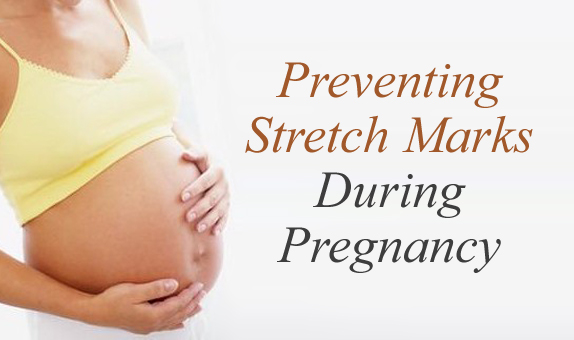For many women–especially those who favor bikinis–pregnancy stretch marks are more to be dreaded than flabby thighs. Nevertheless, 90% of all women will develop pink or reddish, slightly indented, sometimes itchy streaks on their abdomen, hips and/or breasts, sometime during pregnancy. Stretch marks, also called striae distensae, occur most frequently on the abdomen, but some women also get them on the breasts, buttocks or thighs.
Stretch marks usually occur in the dermis, or elastic mid-layer of the skin. Repeated or sudden stretching of this layer causes a breakdown of the tissue, leaving behind scar tissue. Stretch marks usually occur during mid- to late pregnancy. As their name implies, Scar tissue that forms when the normal elasticity of the skin can’t keep up with the stretching required during pregnancy is called stretch marks. Stretch marks are generally due to a large and/or rapid increase in weight.
Mothers-to-be whose skin tone is good and elastic either because of heredity or because they have maintained years of healthy nutrition and positive exercise habits may go through one or more pregnancies without any striations. Others, by keeping weight gain gradual, moderate and steady may be able to minimize and possibly prevent stretch marks.
Other things to try
Be sure that your diet contains adequate sources of the nutrients needed for healthy skin. Remember, stretch marks can result from nutritional deficiency. Be sure to consume foods that promote skin health. Eat plenty of zinc-rich foods such as fish and nuts. Foods like carrots, milk and citrus fruits are high in vitamins C, D, and A. Choose 2-3 servings daily of protein-rich foods such as eggs. Sufficient protein is essential.
Promoting the elasticity of your skin by nourishing it with good diet and nutritional choices may help. Do you remember mother telling you to drink lots of water? It’s important for the health of your baby and can help keep your skin supple and more unlikely to develop stretch marks. Caffeine will increase your risk of developing stretch marks. If you must drink caffeine drinks, tea or coffee, make sure your water intake matches or exceed your caffeinated drink intake.
Understand that stretch marks are caused from within, and external treatments can’t remove or prevent them. Money spent on expensive or exotic skin creams may make you feel like you’re doing something, but it won’t make the stretch marks disappear.
No cream, lotion, or oil, no matter how expensive, will prevent or alleviate stretch marks–although they may be fun for your partner to rub on the affected areas and will prevent your skin from drying out.
Even though keeping your skin soft and supple won’t prevent stretch marks, it might help minimize them and it may help you feel better about yourself. Some women find that cocoa butter helps keep the skin soft. A gentle massage with oil or cream–on your own or with the help of your mate–may be pleasurable and relaxing as well as an aid to soft, smooth skin.
If you do develop stretch marks during pregnancy, you can console yourself with the knowledge that they will gradually fade to a silvery sheen some months after delivery. Just look upon this marks not as a disfigurement but the badge of honor for mothers..
After the pregnancy, when the stretch marks have faded, some women choose to visit a cosmetic or laser surgeon who may select dermabrasion or chemical peels to reduce the unsightly scars. Recent developments in laser techniques have offered hope for those who choose to have the scars permanently removed.
Gen Mason is a loving mother of 2 beautiful children. To learn about losing weight during and after pregnancy go to Pregnancy Without Pounds
